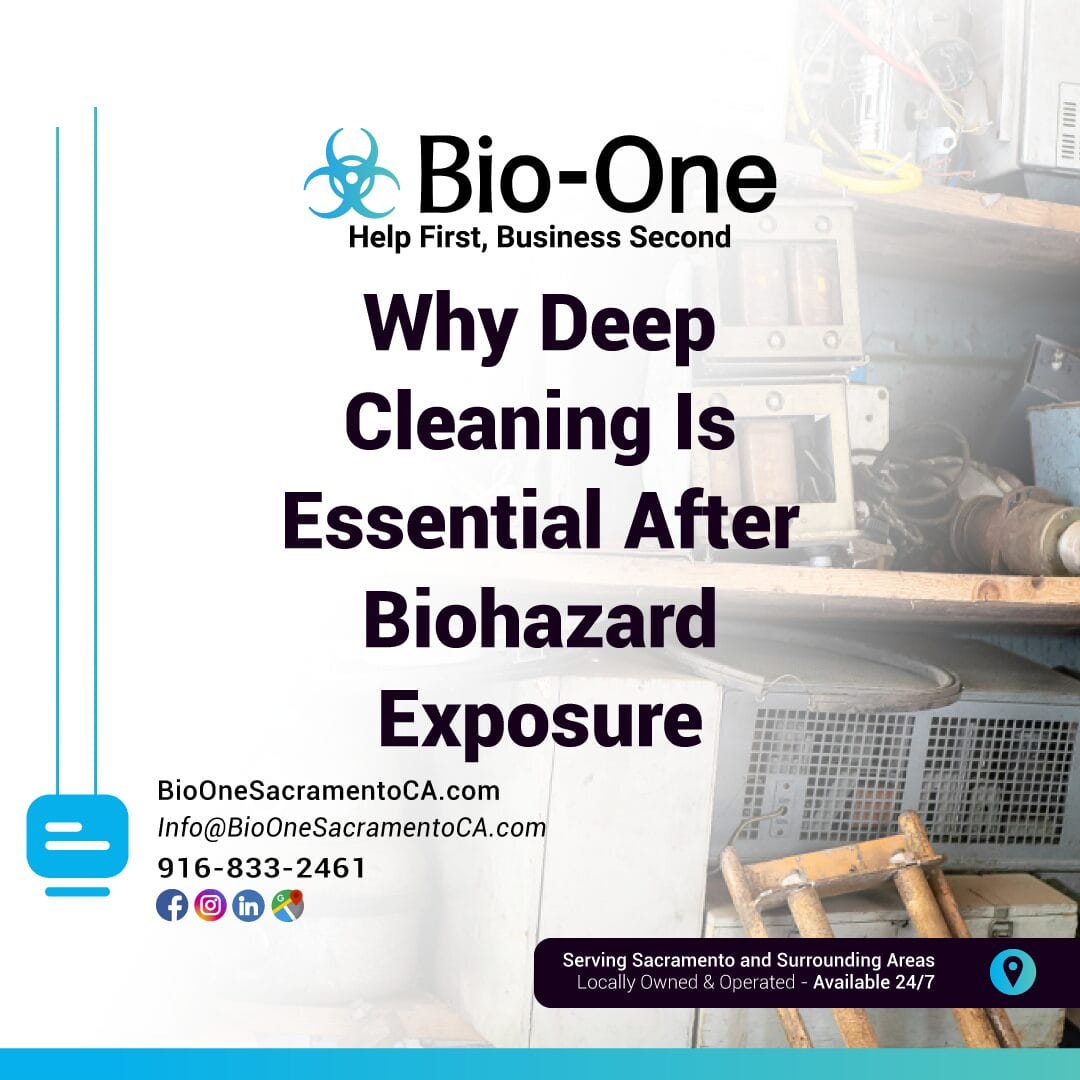
Beyond the emotional toll that comes with a traumatic event, crime scene, or accident, there's a serious physical threat that many people overlook: biohazards. These are biological substances that pose a threat to the health of living organisms. Simply wiping down surfaces isn't enough. A thorough, professional deep cleaning after biohazard exposure is not just recommended—it's absolutely critical.
Understanding what makes a situation a biohazard is the first step. It's not just about what you can see. It involves blood, bodily fluids, and other potentially infectious materials that can carry dangerous pathogens. We'll explore why specialized cleaning is essential, the risks involved, and how professionals restore safety to a contaminated environment.
What Qualifies as a Biohazard?
A biohazard is any biological material—microorganisms, plants, animals, or their byproducts—that can harm humans. In the context of property cleanup, this usually refers to situations involving:
- Blood and Bodily Fluids: Following an unattended death, suicide, or violent crime, these materials can seep into porous surfaces like wood, carpet, and drywall.
- Sewage Backups: Raw sewage contains a host of bacteria, viruses, and parasites that can cause serious illness.
- Hoarding Situations: Extreme hoarding can lead to the accumulation of animal or human waste, mold, and decaying organic matter.
- Chemical Spills: While not biological, spills from things like meth labs are often handled by biohazard remediation experts due to their toxic nature.
These materials can harbor pathogens like HIV, hepatitis B and C, and MRSA. According to the Centers for Disease Control and Prevention (CDC), exposure to bloodborne pathogens can lead to severe or life-threatening illnesses. This is why a standard cleaning approach is completely inadequate.
The Risks of Improper Cleaning
You might be tempted to handle the cleanup yourself to save money or time, but this can have serious consequences. The risks of attempting a cleanup without proper training and equipment are significant.
Invisible Dangers
Pathogens are microscopic and can survive on surfaces for days or even weeks. Without the right tools to detect and neutralize them, you could be leaving your family or employees exposed to long-term health risks. A proper deep cleaning after biohazard exposure goes far beyond visible stains.
Structural Contamination
Fluids can penetrate deep into a building's structure. Porous materials like carpets, subflooring, drywall, and wood framing can absorb biohazardous materials. If not properly removed and treated, these areas can continue to off-gas odors and harbor dangerous bacteria, leading to persistent health issues and a decrease in property value.
Emotional Trauma
Cleaning up after a traumatic event is emotionally taxing. Forcing yourself or loved ones to handle this task can lead to lasting psychological distress. Hiring a professional service allows you to focus on healing and recovery while trained experts manage the difficult and dangerous work.
Why Professional Deep Cleaning After Biohazard is Non-Negotiable
A professional biohazard cleanup team does more than just clean. They follow a strict, regulated process to ensure the area is completely decontaminated, sanitized, and safe for reoccupation.
Adherence to Safety Protocols
Companies specializing in biohazard remediation are trained to follow strict guidelines set by organizations like the Occupational Safety and Health Administration (OSHA). This includes using personal protective equipment (PPE), which protects technicians from exposure. Their process involves:
- Containment: The affected area is sealed off to prevent cross-contamination to other parts of the property.
- Removal: All visible traces of blood and biological materials are removed.
- Cleaning and Disinfection: The area is then cleaned using special, hospital-grade disinfectants designed to kill bloodborne pathogens. This is a critical step in any deep cleaning after biohazard event.
- Deodorization: Professionals use advanced techniques like ozone treatments or hydroxyl generators to eliminate any lingering odors.
Specialized Tools and Chemicals
Your household bleach and sponges are no match for biohazards. This level of detail is what makes a professional deep cleaning after biohazard exposure so effective.
Proper Disposal of Waste
You can't just throw biohazardous materials in the trash. Professional cleanup services handle the proper packaging, transportation, and disposal of all contaminated materials, protecting you from potential legal fines and public health risks.
Restoring Peace of Mind
Navigating the aftermath of a biohazard situation is incredibly challenging. The most important step you can take is to ensure the environment is made safe again. Attempting to handle the cleanup yourself exposes you to health risks and emotional trauma.
At Bio-One of Sacramento, we understand the sensitivity and urgency of these situations. Our team provides compassionate, discreet, and thorough services to restore safety and peace of mind. If you are facing a difficult cleanup, know that help is available. We handle the deep cleaning after biohazard so you can focus on moving forward. Visit us at www.bioonesacramentoca.com to learn more about how we can help.


